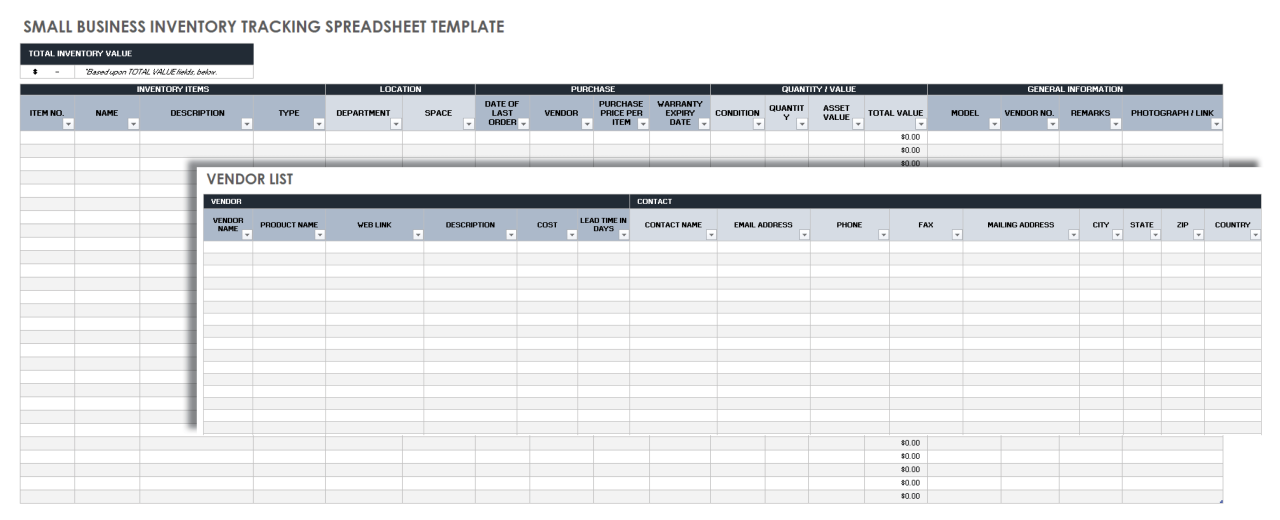Welcome to the realm of small business inventory spreadsheet excel, where managing your stock has never been easier! This guide will take you on a journey of inventory mastery, empowering you with the knowledge to create, customize, and utilize a spreadsheet that will revolutionize your inventory management.
Dive into the world of inventory tracking, unraveling the secrets of accurate stock levels, optimized storage, and seamless integration with other software. With each step, you’ll discover how a spreadsheet can transform your inventory management, saving you time, reducing costs, and maximizing efficiency.
Customizing the Spreadsheet: Small Business Inventory Spreadsheet Excel
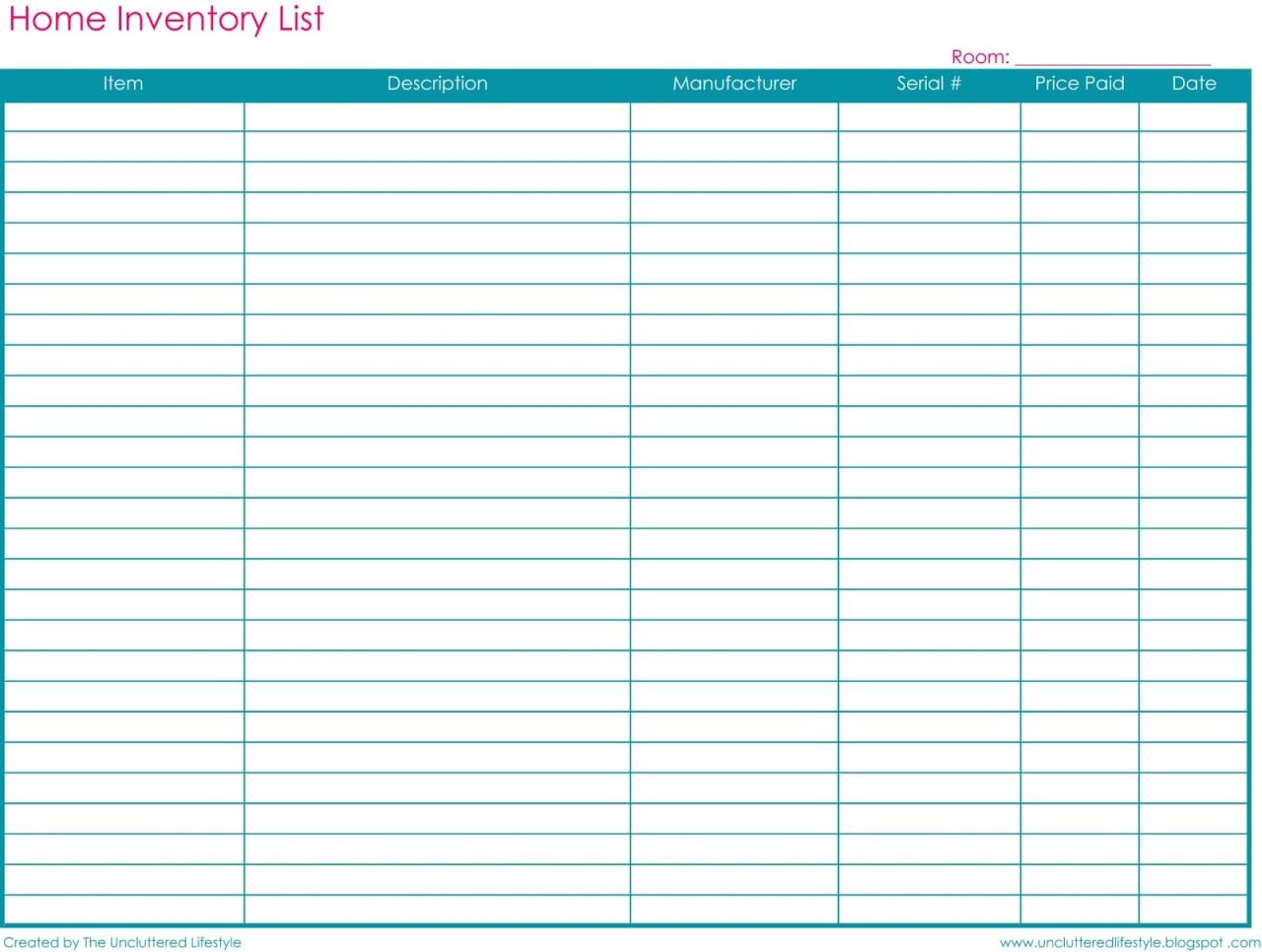
The provided spreadsheet can be customized to meet the specific needs of your business. This includes adding or removing columns, changing the formatting, and creating formulas to automate calculations.
Formulas
Formulas can be used to perform calculations based on the data in the spreadsheet. For example, you could create a formula to calculate the total cost of inventory, or the average price of an item.
To create a formula, start by typing an equals sign (=) in the cell where you want the result to appear. Then, enter the formula you want to use. For example, to calculate the total cost of inventory, you could use the following formula:
=SUM(B2:B10)
Conditional Formatting
Conditional formatting can be used to highlight cells that meet certain criteria. For example, you could use conditional formatting to highlight cells that contain a value greater than a certain amount, or cells that contain a specific text string.
To create conditional formatting, select the cells you want to format, then click the “Conditional Formatting” button on the Home tab. In the Conditional Formatting dialog box, select the rule you want to use. For example, to highlight cells that contain a value greater than 100, you could use the following rule:
Format cells that are greater than: 100
Using the Spreadsheet for Inventory Management
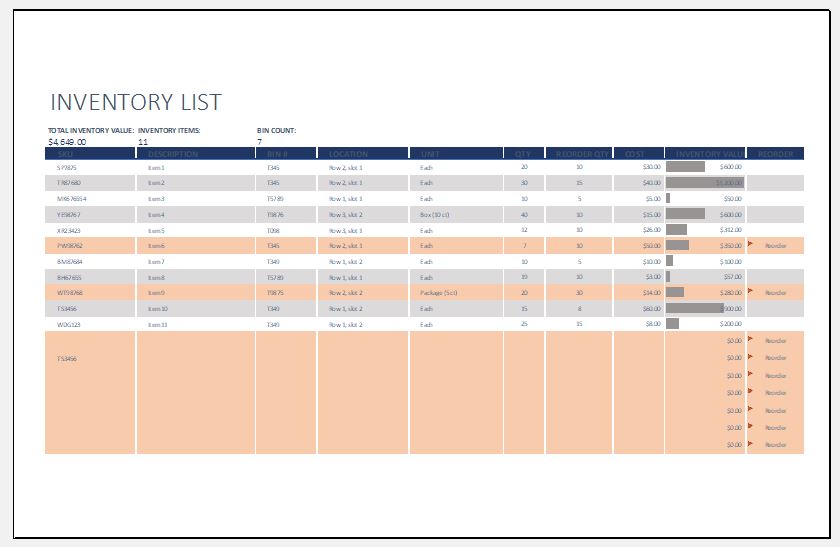
The spreadsheet can be used to effectively track inventory levels, providing real-time visibility into the availability of items. By regularly updating the spreadsheet with accurate data, businesses can gain insights into their inventory status and make informed decisions regarding stock management.
Tips for Managing Stock Levels
- Establish minimum and maximum stock levels:Determine the optimal inventory levels for each item based on historical data and demand forecasts. This helps prevent overstocking or understocking.
- Regularly monitor inventory levels:Keep track of inventory levels on a regular basis to identify potential issues early on. This allows businesses to respond quickly to changes in demand or supply.
- Use inventory forecasting techniques:Utilize statistical methods or historical data to predict future demand and adjust stock levels accordingly. This helps minimize the risk of overstocking or stockouts.
- Implement inventory control systems:Establish procedures for receiving, storing, and issuing inventory to ensure accurate tracking and minimize loss or damage.
- Conduct regular inventory audits:Physically verify inventory levels periodically to ensure accuracy and identify any discrepancies.
Advanced Features
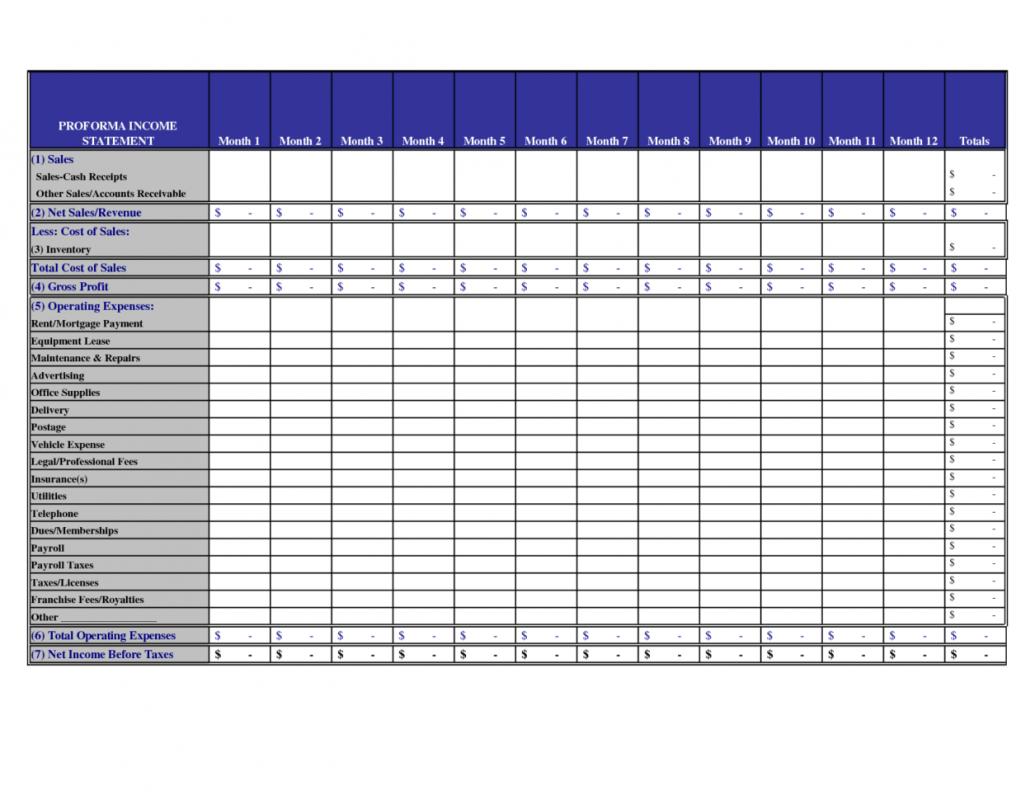
To enhance the functionality of the inventory spreadsheet, you can incorporate advanced features such as pivot tables, macros, and integration with other software.
Creating Pivot Tables for Data Analysis
Pivot tables are interactive tables that allow you to summarize, analyze, and present data in various ways. By dragging and dropping fields from the source data, you can create custom reports that provide insights into your inventory data. For example, you can create a pivot table to show the total inventory value by product category or the average inventory turnover rate by supplier.
Using Macros to Automate Tasks
Macros are small programs that can be recorded and used to automate repetitive tasks in the spreadsheet. By recording a series of steps, such as adding new items to the inventory or generating reports, you can save time and minimize errors.
Macros can be especially useful for complex or time-consuming tasks that need to be performed regularly.
Integrating with Other Software, Small business inventory spreadsheet excel
The inventory spreadsheet can be integrated with other software applications to extend its functionality. For example, you can link the spreadsheet to a database to store inventory data or connect it to an accounting software to track inventory costs and transactions.
By integrating with other software, you can streamline your inventory management process and improve data accuracy.
Tips for Maintaining an Accurate Inventory
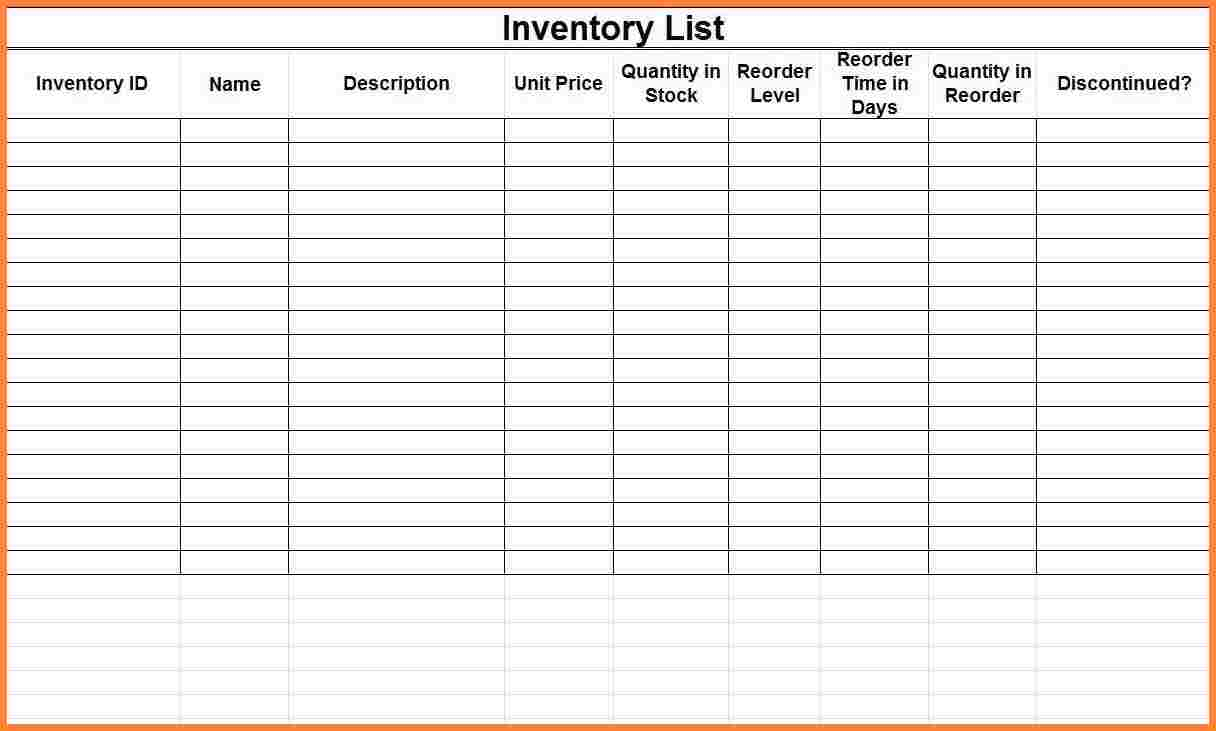
Maintaining an accurate inventory spreadsheet is crucial for efficient inventory management. Here are some best practices to ensure the accuracy of your spreadsheet:
Regular audits and stock counts are essential for identifying discrepancies and preventing errors. Physical stock counts should be conducted periodically to verify the accuracy of the spreadsheet against the actual inventory.
Regular Audits and Stock Counts
* Conduct regular audits to identify and correct any errors in the spreadsheet.
- Perform physical stock counts to verify the accuracy of the spreadsheet against the actual inventory.
- Use a barcode scanner or RFID tags to automate the stock counting process.
Conclusion
Implementing an inventory management spreadsheet for your small business offers a multitude of advantages, including:
- Enhanced organization and visibility into your inventory levels.
- Streamlined inventory tracking and record-keeping.
- Improved efficiency in inventory management tasks.
- Reduced risk of overstocking or understocking.
- Better decision-making based on accurate inventory data.
By incorporating these spreadsheet techniques into your inventory management processes, you can significantly enhance the efficiency and accuracy of your inventory management, leading to improved business outcomes.
End of Discussion
![]()
As you embark on this spreadsheet adventure, remember that the key to success lies in meticulous maintenance and regular audits. By embracing these practices, you’ll ensure that your inventory spreadsheet remains a reliable and indispensable tool for your small business.
So, buckle up and get ready to transform your inventory management with the power of small business inventory spreadsheet excel. May your spreadsheets be ever-accurate, your stock levels optimized, and your business thriving!
Questions Often Asked
Q: What are the benefits of using a spreadsheet for inventory management?
A: Spreadsheets offer ease of use, customization, real-time tracking, data analysis, and integration with other software.
Q: How do I create an inventory spreadsheet?
A: Start with a new spreadsheet, include essential columns like product name, SKU, quantity, and price, and customize it to fit your business needs.
Q: How can I track inventory levels effectively?
A: Use formulas to calculate inventory levels, set up conditional formatting for alerts, and conduct regular stock counts to ensure accuracy.
